Nasturtiums offer five powerful pest control benefits for your garden. They emit spicy scents that repel cucumber beetles, squash bugs, and cabbage loopers while masking your vegetables’ aromas from Colorado potato beetles. You can use them as trap crops to lure aphids and whiteflies away from valuable plants. They’ll attract beneficial insects like ladybugs and lacewings that prey on harmful pests. These edible flowers provide strategic companion planting options while supporting organic gardening principles that’ll revolutionize your natural pest management approach.
Natural Repellent Properties Against Common Garden Pests
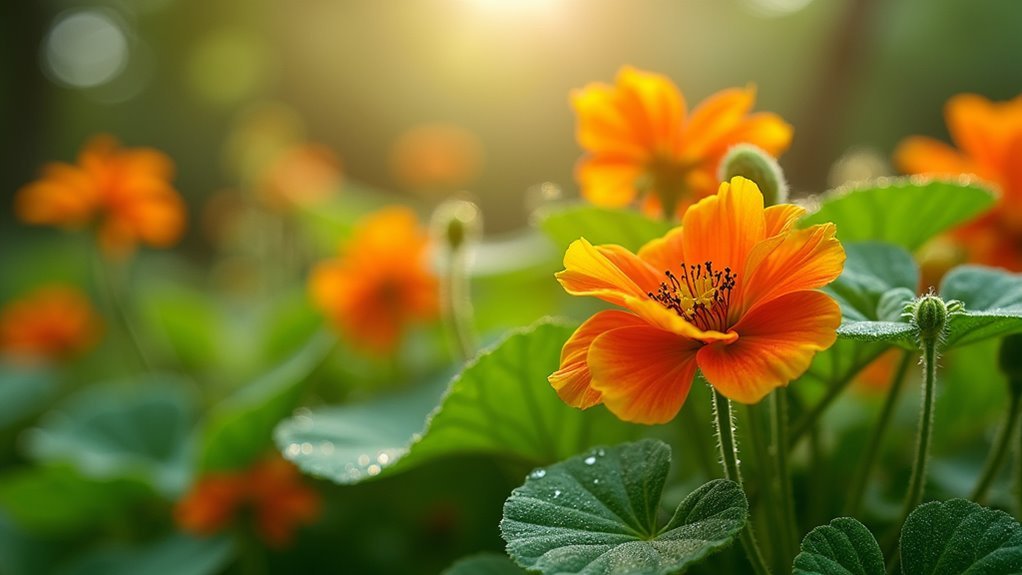
When it comes to natural pest control, nasturtiums stand out as one of the garden’s most effective defenders. These colorful flowers emit a distinctive spicy scent that confuses and deters cucumber beetles, squash bugs, and cabbage loopers from infesting your crops.
You’ll find that nasturtiums excel at masking the aroma of nearby vegetables, preventing Colorado potato beetles from locating their preferred plants.
As companion planting partners, nasturtiums function as excellent trap plants, drawing aphids and whiteflies away from your valuable vegetables. They simultaneously attract beneficial insects like ladybugs and lacewings, which naturally prey on harmful garden pests.
This dual-action approach makes nasturtiums invaluable for thorough pest management while reducing your reliance on chemical interventions.
Trap Crop Functionality to Protect Valuable Plants
Beyond their natural repellent qualities, nasturtiums excel as strategic trap crops that draw harmful insects away from your prized vegetables. When you’re planting nasturtiums approximately six feet from cash crops, they’ll effectively lure pests while allowing easier monitoring of infestations. Their spicy scent confuses insects, making it harder for them to locate preferred targets.
| Pest Type | Target Crops | Nasturtium Effect |
|---|---|---|
| Aphids | Tomatoes, peppers | Attracts away from vegetables |
| Flea Beetles | Brassicas, eggplant | Diverts feeding damage |
| Cabbage Worms | Cabbage, broccoli | Repels adult moths |
| Mexican Bean Beetles | Beans, legumes | Deters egg-laying |
These companion plants protect valuable plants while you regularly remove infested nasturtiums to reduce pest populations. This integrated approach maximizes pest control effectiveness throughout your garden.
Beneficial Insect Attraction for Biological Control
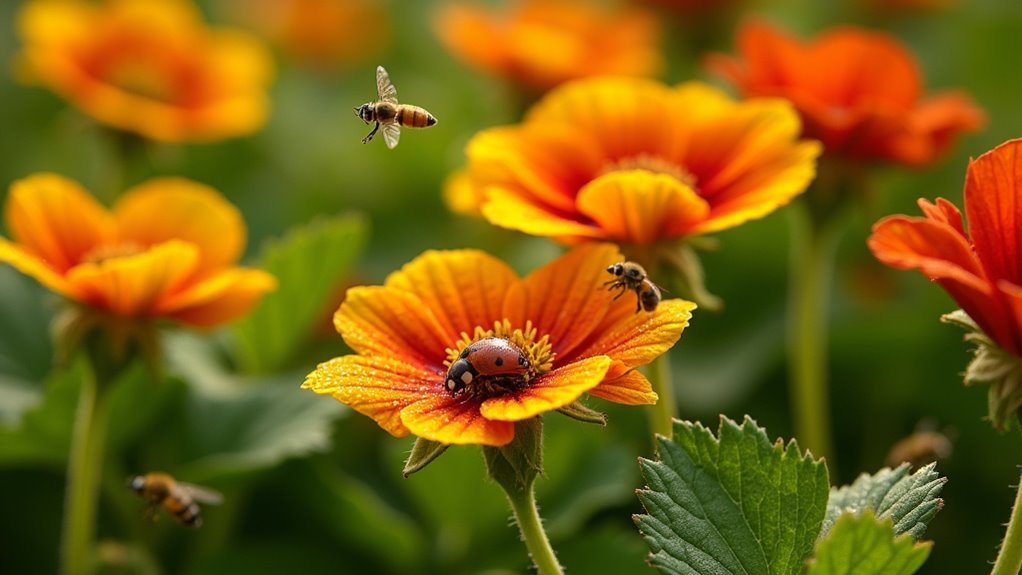
While nasturtiums effectively divert harmful insects as trap crops, they simultaneously serve as powerful magnets for beneficial predators that naturally control pest populations. Their vibrant flowers attract ladybugs, lacewings, and hoverflies—nature’s pest control specialists that feast on aphids and other garden destroyers.
Nasturtiums act as natural pest control headquarters, drawing beneficial predators like ladybugs and lacewings to eliminate garden destroyers.
You’ll create a thriving garden ecosystem that reduces your dependence on chemical interventions by establishing this diverse habitat.
Here’s how nasturtiums enhance biological control:
- Predator recruitment – Beneficial insects like parasitic wasps target harmful pests directly
- Pollination enhancement – Bees and hummingbirds improve crop yields while visiting nasturtium flowers
- Ecosystem balance – Multiple beneficial species create food webs that maintain long-term pest suppression
This natural approach transforms your garden into a self-regulating system where nasturtiums orchestrate sophisticated biological control.
Strategic Companion Planting Applications
Since nasturtiums excel at both repelling pests and attracting beneficial insects, their strategic placement throughout your garden creates targeted protection zones for vulnerable crops.
You’ll maximize pest control by interplanting nasturtiums near cucumbers and tomatoes to repel cucumber beetles, whiteflies, and squash bugs.
When companion planting with brassicas like cabbage and kale, nasturtiums deter cabbage loopers and aphids effectively.
Plant them alongside beans to ward off Mexican bean beetles that threaten your harvest.
Position nasturtiums near peppers and eggplants to prevent destructive hornworm egg-laying.
These vibrant flowers function as both trap crops and beneficial insect magnets, drawing ladybugs and lacewings that naturally control harmful pests, making your vegetable garden more resilient and productive.
Edible Pest Management Solutions
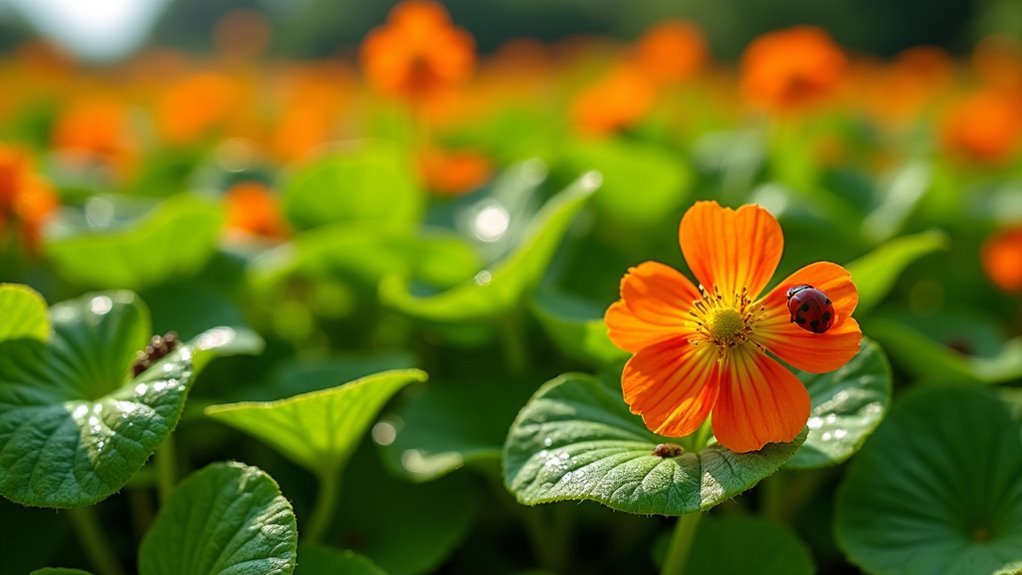
When nasturtiums serve double duty as both edible crops and pest deterrents, you’re creating the ultimate sustainable garden solution.
These versatile companion plants offer extensive pest management while providing delicious edible flowers and leaves for your kitchen.
You can maximize their effectiveness through three key strategies:
- Harvest regularly – Pick flowers and leaves continuously to maintain plant vigor while enjoying their peppery flavor in salads and garnishes.
- Position as trap crops – Plant nasturtiums around vulnerable vegetables to draw aphids and squash bugs away from your main crops.
- Welcome beneficial insects – Allow some flowers to remain unharvested to attract ladybugs and lacewings that naturally control pest populations.
This approach transforms pest repellent into profit, supporting organic gardening principles while reducing chemical dependency.
Frequently Asked Questions
Are Nasturtiums Good for Pest Control?
Yes, you’ll find nasturtiums excellent for pest control. They’re natural pest deterrents that confuse harmful insects with their spicy scent, attract beneficial predators, and serve as effective trap crops for garden protection.
What Bugs Does Nasturtium Keep Away?
You’ll find nasturtiums repel cucumber beetles, squash bugs, Colorado potato beetles, and cabbage loopers with their spicy scent. They also attract aphids away from your valuable crops, acting as effective trap plants.
What Insects Are Attracted to Nasturtiums?
You’ll attract beneficial predators like hoverflies and ladybugs that eat garden pests. Nasturtiums also draw pollinators including bees and hummingbirds, plus they’re magnets for aphids and cabbage moths you’re trying to control.
What Not to Plant Next to Nasturtium?
You shouldn’t plant broccoli, cauliflower, potatoes, kale, Brussels sprouts, rosemary, sage, or carrots near nasturtiums. They’ll create pest problems, soil conflicts, allelopathy issues, or interfere with proper growth and flavor development.
In Summary
You’ve discovered nasturtiums offer five powerful pest control benefits for your garden. You can use them as natural repellents, trap crops, and beneficial insect magnets. They’ll enhance your companion planting strategy while providing edible solutions to pest problems. By incorporating these versatile flowers into your garden design, you’re creating a sustainable, chemical-free pest management system that protects your valuable plants while adding beauty and functionality to your outdoor space.

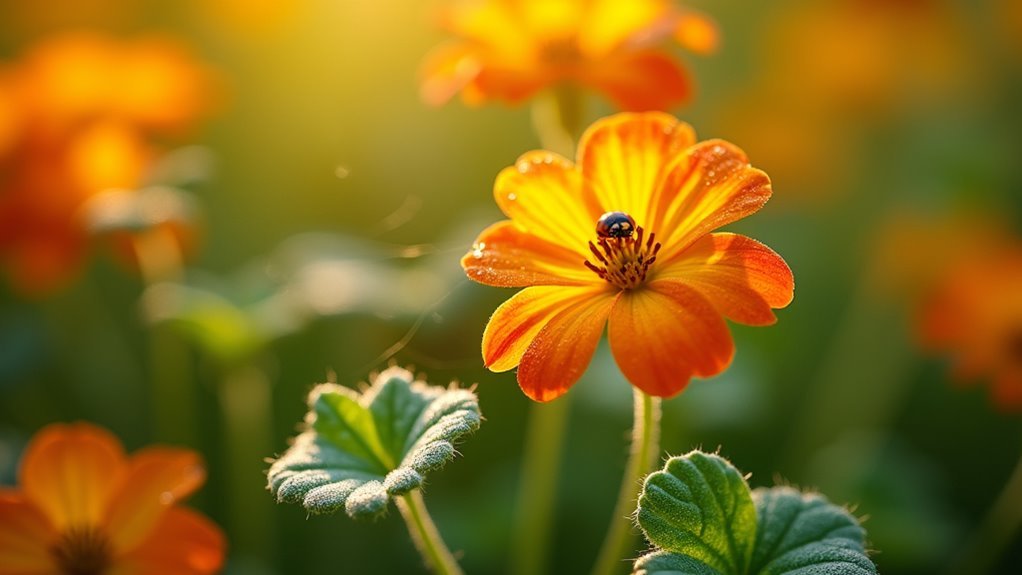
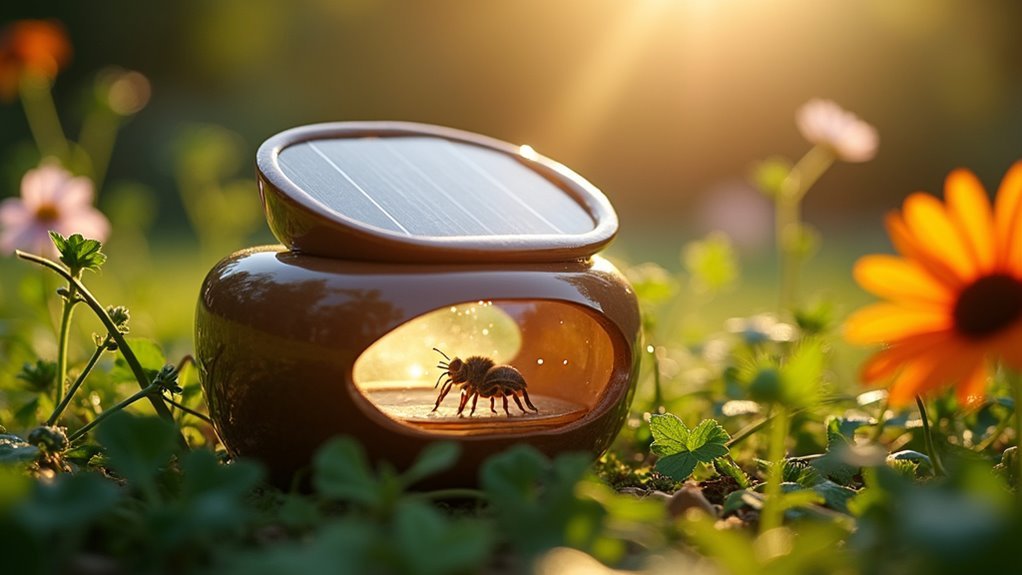


Leave a Reply